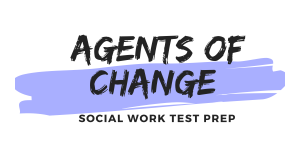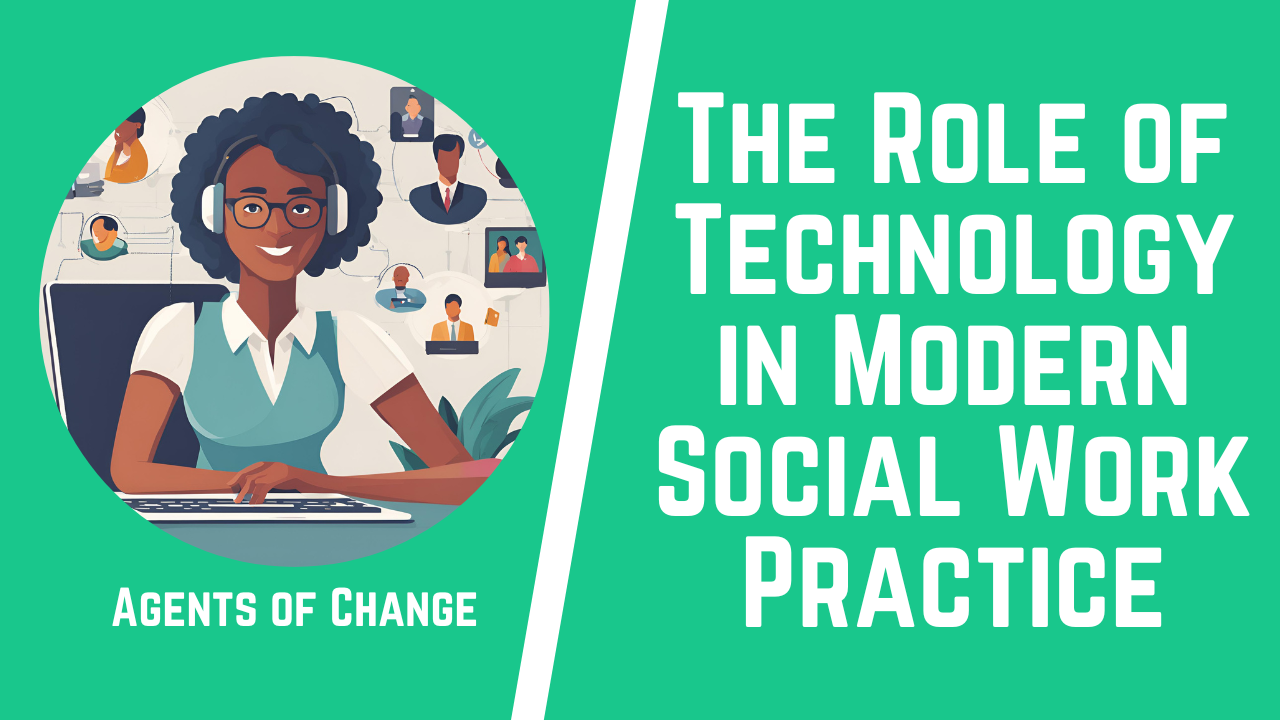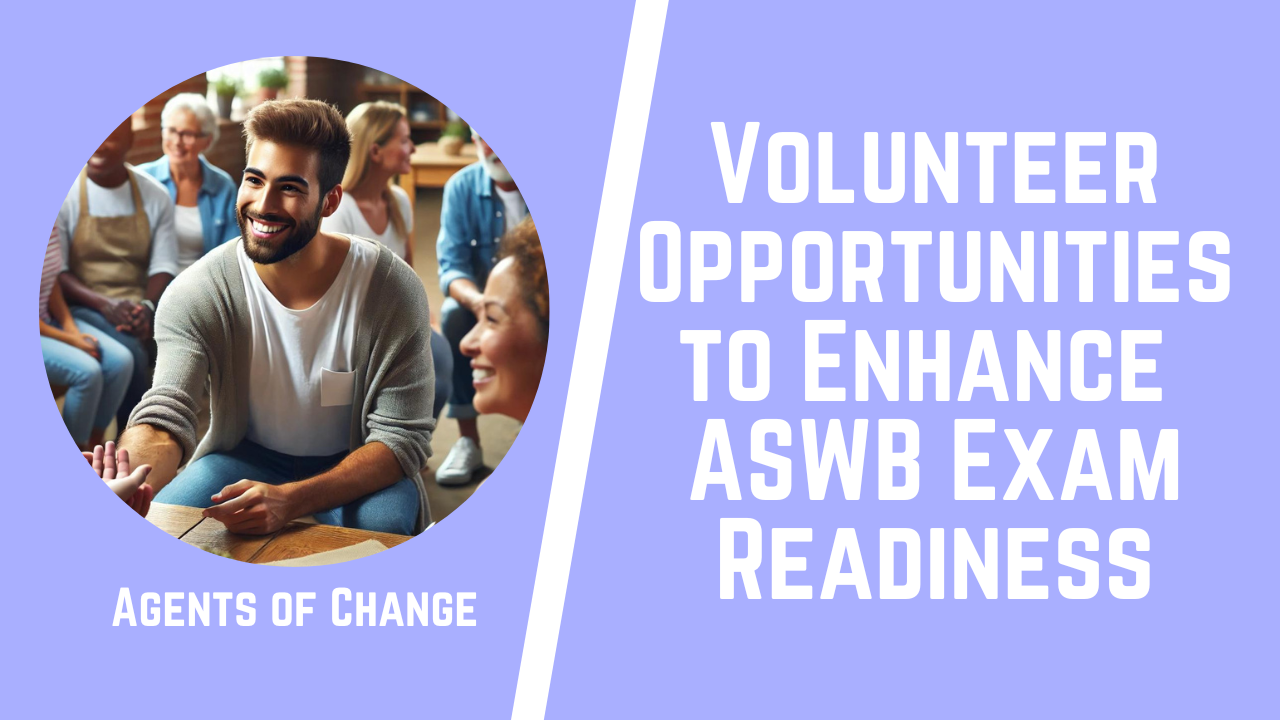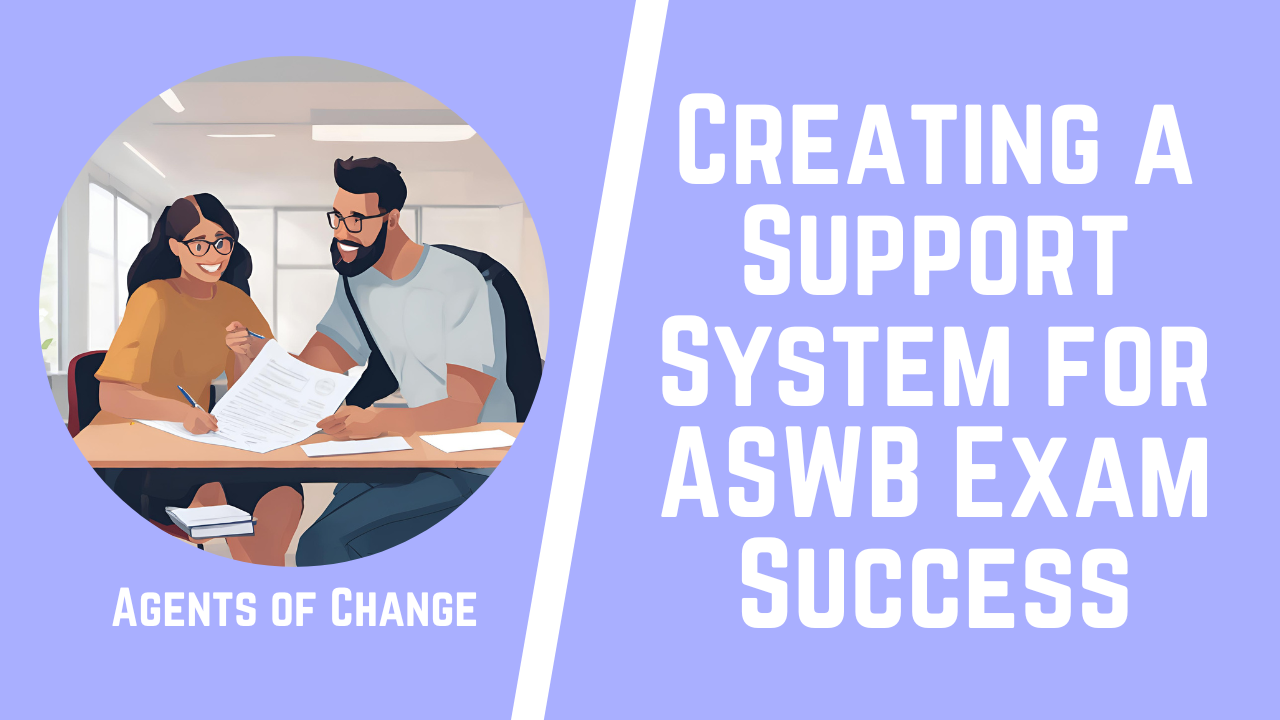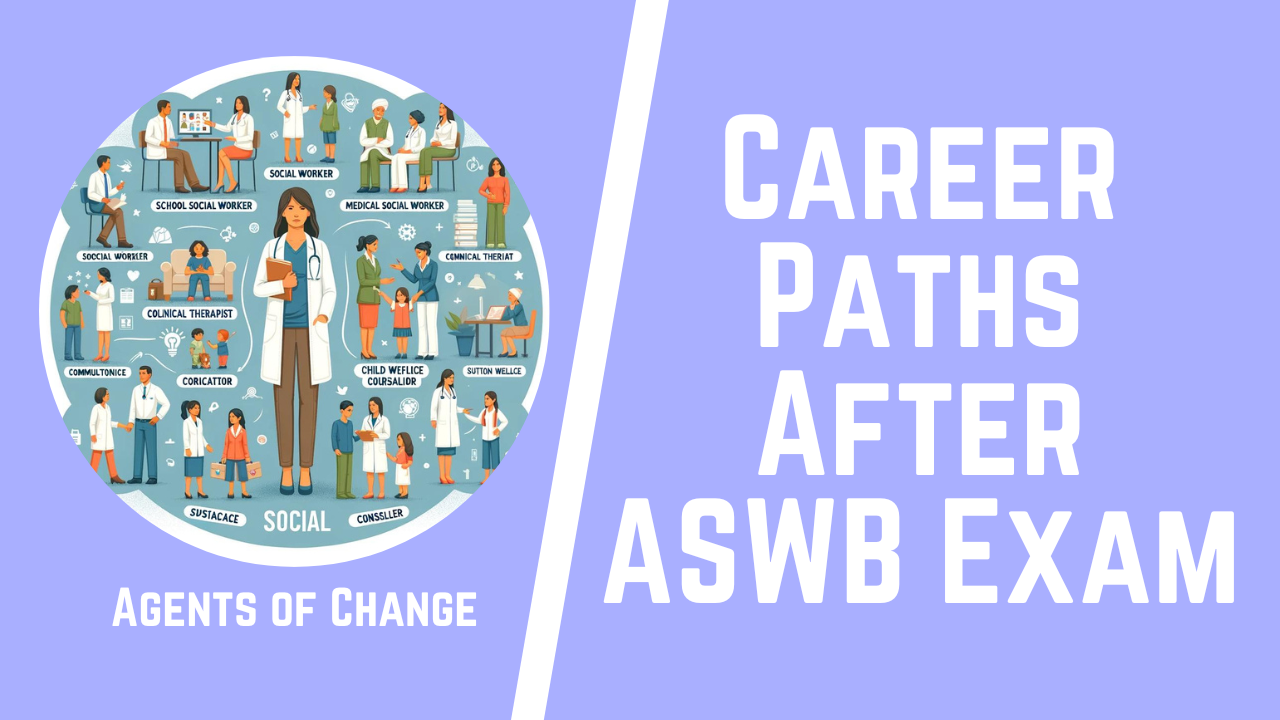Okay, let’s face it! Preparing for the ASWB (Association of Social Work Boards) examination isn’t a cakewalk. With heaps of content to cover and concepts to internalize, it’s easy to feel overwhelmed. But, what if I told you there’s a secret weapon to make things a tad bit easier?
Enter: Visualization Techniques! And no, I’m not just talking about daydreaming of a sunny beach. Instead, we’re diving into some serious brain hacks that can seriously supercharge your ASWB prep!
Learn more about the ASWB exam and create a personalized ASWB study plan with Agents of Change. We’ve helped thousands of Social Workers pass their ASWB exams and want to help you be next!
1) The Power Behind Visualization
What’s Visualization Anyway?
At its core, visualization is more than just a fancy word for imagining stuff. It’s a powerful mental tool that’s been used by athletes, scholars, and achievers in all walks of life to reach their goals.
Think of it as creating a mental rehearsal, a “movie” in your mind where you play out scenarios, learn new concepts, and even face challenges head-on.
The Brain’s Play with Imagery
The human brain is a marvelous organ, but it sometimes doesn’t differentiate between what’s real and what’s imagined. That’s why you feel real emotions during dreams or even movies. When you visualize, particularly with strong emotion or intent, your brain lights up. It starts creating neural pathways as if you were experiencing the event in reality.
The Neuroscience Bit
When you picture something in your mind, the brain releases a neurotransmitter called dopamine. This guy’s responsible for feeling good and motivated. So, when you’re visualizing your ASWB preparation, understanding a challenging concept, or even acing the exam, the dopamine release makes you feel more positive and motivated to achieve it.
The amygdala, the part of our brain that detects fear, gets tricked during visualization. It reduces the fear associated with challenging tasks, making your study sessions less anxiety-provoking.
Why Visualization Boosts Learning
- Making Abstracts Tangible: Complex concepts can be tricky. By visualizing them, you can turn abstract ideas into concrete images, making them easier to understand and recall.
- Building Connections: Visualization helps link new information to what you already know. It’s like constructing a mental web where everything’s interlinked.
- Enhancing Focus: In our digital age, distractions are everywhere! But when you visualize, you’re giving your mind a single point of focus, which reduces wandering and boosts concentration.
- Improving Motivation: Visualizing success, be it understanding a concept or acing the ASWB exam, can serve as a powerful motivational tool. When you ‘see’ the fruits of your labor, you’re more inclined to work towards it.
In essence, visualization isn’t just about creating images in your mind. It’s about understanding, connecting, focusing, and even motivating. It’s a multi-dimensional tool, waiting to be tapped into for your ASWB preparation!
2) ASWB Preparation: Harnessing the Power of Visualization Techniques
Laying the Groundwork: Understanding Visualization in ASWB Context
So, we’ve talking about how mighty visualization is. But when it comes to ASWB preparation, how does one use it effectively?
When you’re studying for the ASWB, you’re not just cramming facts. You’re building a holistic understanding of Social Work. This means understanding complex theories, recalling numerous studies, and recognizing the intricate web of concepts.
Mind Mapping: The Art of Interconnected Learning
Mind mapping isn’t just about drawing colorful diagrams (though that part is fun!). It’s about understanding and representing the relationships between different bits of information.
- Center to Periphery: Your central idea acts as the sun, and the related concepts orbit around it like planets. This helps in understanding the core of any topic and its peripheral details.
- Flow and Hierarchy: The way you branch out from the center represents the flow of information. Important sub-topics get primary branches, while detailed specifics sprout as secondary or tertiary branches.
- Color Coding: Add a splash of colors to differentiate between topics, subtopics, and details. Plus, it’s been shown that colors can help in better retention!
Dynamic Storytelling: Weaving Narratives
Transforming dry, dull facts into captivating stories is a popular strategy. And it’s effective!
- Theories as Characters: Visualize each theory or principle as a unique character with its traits, background, and quirks.
- Dramatic Interactions: How do these “characters” interact? Are some theories in conflict? Others in harmony? Create a storyline around them. It adds a layer of interest and aids recall.
Symbolism: A Shortcut to Quick Recall
The beauty of symbols is their simplicity. By associating a symbol with a concept, you’re compressing loads of information into a single, easily recallable image.
- Personal Touch: Make your symbols personal and quirky. Maybe the principle of self-determination reminds you of a steering wheel. Use that!
- Consistent Usage: Keep using the same symbols across your notes and mind maps. Repetition reinforces memory.
Active Visualization: The Deep Dive
Beyond mapping and symbols, there’s an even deeper level of visualization – immersing oneself in a scenario.
- Case Studies: Instead of passively reading, visualize yourself as the Social Worker in the scenario. How would you feel? What would be your approach? This brings a 3D perspective to 2D text.
- Mock Scenarios: Create imaginary situations and visualize dealing with them using the theories and principles you’ve learned. This not only helps in retention but also in application!
Consistency is Key
Harnessing the power of visualization techniques in ASWB preparation isn’t a one-off thing. The more you visualize, the more intuitive and effective it becomes. Remember, it’s not about replacing traditional study methods but complementing them. Together, they form a formidable combo, gearing you up for success in the ASWB exam!
3) Agents of Change Test Prep: Amplifying Visualization Techniques
When it comes to ASWB preparation, having a reliable and holistic platform is crucial. Agents of Change Test Prep (www.agentsofchangeprep.com) stands out for its support for many aspiring Social Workers.
But did you know that their framework aligns perfectly with the visualization techniques we’ve discussed? Let’s dive into how you can seamlessly integrate the two!
Tailored Content for Mind Mapping
Agents of Change’s Material Alignment: The structured and comprehensive content provided by Agents of Change Test Prep is perfect for creating detailed mind maps. Each section, whether it’s on Social Work theories or ethical guidelines, is segmented in a way that makes drawing connections effortless.
Your Visualization Move: As you go through the material, actively draw out mind maps, using the content as your guiding star. The structure provided by Agents of Change Test Prep acts as a scaffold, making your visualization journey smoother!
Engaging Scenarios for Dynamic Storytelling
Scenario-based Questions: One of the standouts of Agents of Change Test Prep is its focus on scenario-based questions. These aren’t mere rote-learning questions; they push you to think, analyze, and apply.
Your Visualization Twist: Treat each scenario as a chapter of a story. Visualize the situation, the characters, the challenges, and the potential solutions. By creating a narrative around these scenarios, you make them memorable and relatable.
Interactive Tools to Support Symbolism
The Digital Edge: Agents of Change Test Prep offers a digital platform that’s interactive and user-friendly. The use of graphics, highlighted points, and distinct section separators makes it conducive for symbol association.
Your Symbol Strategy: As you navigate through the platform, assign symbols to key concepts or principles. Every time you encounter these symbols in your notes or on the platform, they’ll act as quick recall triggers.
Practice Exams: The Ultimate Visualization Ground
Mock Test Magic: The practice exams provided by Agents of Change Test Prep should be an important part of your studying journey. They simulate the real ASWB exam environment, giving you a taste of the actual challenge.
Your Active Visualization Play: Before attempting each practice exam, spend a few minutes visualizing success. Picture yourself calmly navigating through the questions, recalling concepts effortlessly, and confidently marking answers.
Post-exam, re-visualize the tricky questions, diving deep into the scenarios, and understand the nuances. This active visualization not only preps you for the exam but also deepens your understanding of complex concepts.
Bringing It All Together
Agents of Change Test Prep already provides a robust platform for ASWB preparation. When you combine it with the power of visualization techniques, you’re setting yourself up for an enriched learning experience.
By syncing the structured resources of Agents of Change with the creativity of visualization, you’re not just preparing for an exam; you’re sculpting a holistic understanding of Social Work, ready to ace the ASWB with flair!
4) FAQs – Visualization for ASWB Studying Success
Q: How does visualization actually enhance my learning during ASWB preparation?
A: Visualization acts like a superpower for your brain. When you visualize, you’re doing more than just seeing images; you’re engaging multiple regions of your brain. This multi-faceted engagement boosts retention and understanding.
For instance, when you visualize a Social Work scenario, you’re not just recalling facts, but you’re also connecting with the emotions, challenges, and intricacies of the situation. Over time, this makes complex concepts feel more familiar and accessible, which is especially beneficial during the pressure of exam preparation.
With platforms like Agents of Change Test Prep, which offer scenario-based questions, integrating visualization techniques can provide a more in-depth grasp of real-world applications.
Q: I’m new to visualization. Can I integrate it with established study methods I’m using with Agents of Change Test Prep?
A: Absolutely! Visualization isn’t about discarding what works for you; it’s about enhancing it. If you’re using Agents of Change Test Prep, start small. For instance, when you read a concept or encounter a challenging question, take a moment to close your eyes and visualize it. Imagine scenarios, form symbols, or even craft mini-stories.
Over time, as you get comfortable, you can dive deeper into advanced visualization techniques, intertwining them seamlessly with your established study methods. The goal is to make your preparation more dynamic and interconnected.
Q: I’ve heard of meditation. Is visualization similar, and can they be combined for ASWB prep?
A: While visualization and meditation are distinct practices, they share similarities, mainly being inward-focused mental exercises. Meditation primarily centers around mindfulness, grounding, and concentration, while visualization emphasizes creating and manipulating mental images. For ASWB prep, they can be a powerful duo!
Start with a brief meditation session to calm your mind and enhance focus. Once you’re centered, transition into visualization, diving deep into ASWB concepts, scenarios, or even visualizing exam success.
By combining the calming effects of meditation with the active engagement of visualization, you’re essentially giving your brain a wholesome workout, priming it for effective and stress-free ASWB preparation.
5) Conclusion
Embarking on the journey of ASWB preparation is a path filled with intricate concepts, diverse scenarios, and the overarching aim to grasp the essence of Social Work holistically. In such a scenario, traditional study methods, while essential, can sometimes feel limiting. That’s where the transformative power of visualization techniques comes into play. By integrating visualization into your study routine, you’re not just learning; you’re experiencing, connecting, and immersing yourself into the very heart of Social Work.
Platforms like Agents of Change Test Prep already lay down a comprehensive foundation for your ASWB journey. When you intertwine this robust foundation with the dynamic elements of visualization, you amplify your learning manifold. From mind maps that unravel the intricacies of concepts to symbols that act as quick recall triggers, from narratives that bring scenarios to life to active visualization that deepens understanding—each technique is a step towards making your preparation richer, deeper, and more effective.
As you gear up for your ASWB journey, remember to harness the power of visualization. Visualize, connect, and conquer, because your success story is waiting to be visualized and realized!
Learn more about the ASWB exam and create a personalized ASWB study plan with Agents of Change. We’ve helped thousands of Social Workers pass their ASWB exams and want to help you be next!
————————————————————————————————————————————————
► Learn more about the Agents of Change course here: https://agentsofchangeprep.com
About the Instructor, Meagan Mitchell: Meagan is a Licensed Clinical Social Worker and has been providing individualized and group test prep for the ASWB for over five years. From all of this experience helping others pass their exams, she created the Agents of Change course to help you prepare for and pass the ASWB exam!
Find more from Agents of Change here:
► Facebook Group: https://www.facebook.com/groups/aswbtestprep
► Podcast: https://anchor.fm/agents-of-change-sw
#socialwork #testprep #aswb #socialworker #socialwork #socialworktest #socialworkexam #exam #socialworktestprep #socialworklicense #socialworklicensing #licsw #lmsw #lcsw #aswbexam #aswb #lcswexam #lmswexam #aswbtestprep #aswbtest #lcswtestprep #lcswtest #lmswtestprep #lmswtest #aswbcourse #learningstyles #learningstyle
Disclaimer: This content has been made available for informational and educational purposes only. This content is not intended to be a substitute for professional medical or clinical advice, diagnosis, or treatment
